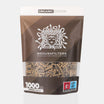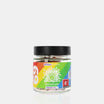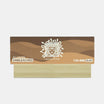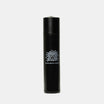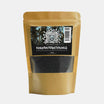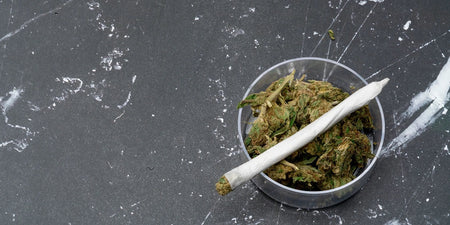CBD vs. THC – What’s the difference?
The most important thing on the topic
The main differences between CBD and THC
In this section we will look at the main differences between CBD and THC.
Read moreMixing THC and CBD: How does the combination work?
The two substances interact with each other in complex ways. Discover more here.
Read moreWhat do THC and CBD mean?
THC (tetrahydrocannabinol) and CBD (cannabidiol) are two primary cannabinoids naturally occurring in cannabis plants. They differ significantly in their chemical structure and properties.
THC, the most well-known cannabinoid, is mainly present in psychoactive varieties of cannabis, such as marijuana. It is traditionally associated with the use of cannabis. In contrast, CBD is non-psychoactive and does not produce intoxicating effects.
In addition to THC and CBD, there are other cannabinoids such as HHC (hexahydrocannabinol) that also attract research interest. However, THC and CBD remain central topics in research and discussion about cannabis due to their different properties, legal status and forms of application.

Accessories for your joint
The main differences between CBD and THC
Different modes of action
CBD and THC interact with the body's endocannabinoid system, but in different ways. How THC works depends, among other things, on the THC content of the product consumed.
THC is known for its psychoactive effects. It binds directly to the CB1 receptors in the brain, which can lead to an intoxicating effect. This bond influences various neurological processes, which can contribute to changes in mood, cognition and cognitive function.
Compared to THC, CBD has no direct binding affinity to the CB1 or CB2 receptors. It may work more indirectly by modulating the activity of other cannabinoids, including THC. CBD is said to influence the absorption of certain endocannabinoids and extend their duration of action in the body. It is also said to be able to weaken the effects of THC by changing its binding to the CB1 receptors.
It is important to emphasize that the mode of action of CBD and THC, as well as their interactions with the endocannabinoid system, are the subject of current research. These findings are critical to understanding the full potential and limitations of these cannabinoids. Their different modes of action form the basis for the discussion about their respective applications and effects, which continue to be a central topic in research and in public perception.
Legal situation
The legal classification of substances varies greatly from country to country and depends on various factors, including the respective legislation and attitudes towards cannabis products.

THC is illegal or strictly regulated in many countries due to its psychoactive properties. The substance often falls under the Narcotics Act, which restricts or prohibits the possession, trade and use of products containing THC. However, in some countries or regions there are exemptions for therapeutic/medical or scientific purposes, subject to strict conditions and controls.

CBD, on the other hand, is considered less restrictive or even legal in many regions, especially when extracted from hemp. Hemp is a variant of the cannabis plant that naturally has very low concentrations of THC. In a letter [1] from 2018, the World Health Organization (WHO) recommended removing CBD preparations from the list of dangerous and less dangerous drugs as long as the THC content is below 0.2 percent. This assessment has led to more liberal legislation regarding CBD in some countries.
Despite these general trends, the legal situation of CBD and THC remains complex. It continues to be influenced by new scientific findings, political decisions and social changes. Users of products containing CBD or THC should therefore always inform themselves about the current legal situation in their respective country or region. The legal differences between CBD and THC reflect the different perceptions and classifications of these substances and are an important aspect in the discussion about cannabis and its derivatives.
intake
Both THC (tetrahydrocannabinol) and CBD (cannabidiol) can be taken in different ways, each with specific absorption routes and effect profiles.
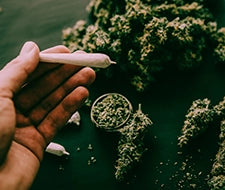
THC is often consumed by smoking or vaporizing cannabis flowers. These methods enable the active ingredient to be absorbed quickly into the bloodstream via the lungs. THC is also available in various edible forms, such as in baked goods or gummies, where it is absorbed through the digestive tract.

CBD is typically administered in the form of oils, capsules, or topical creams. CBD oils are often absorbed sublingually (under the tongue), which can promote rapid absorption into the bloodstream through the oral mucosa. Capsules and edible CBD products offer a convenient dosing method. Topical applications of CBD, such as ointments or creams, are used for local effects and are applied directly to the skin.
It is important to note that the method of ingestion of THC and CBD can affect not only the speed and duration of effects, but also the experience and intensity of the effects.
You can also use our products for CBD joints and CBD cigarettes
Mixing THC and CBD: How does the combination work?
THC (tetrahydrocannabinol) and CBD (cannabidiol) interact with each other in complex ways when taken together.
A study in the European Archives of Psychiatry and Clinical Neuroscience examined how the cannabinoids Δ9-tetrahydrocannabinol (THC) and cannabidiol (CBD), found in the cannabis plant, alone and in combination, affect frequent and occasional cannabis users. It was found that both substances are psychoactive, but only THC is considered intoxicating [2].
A randomized, placebo-controlled study examined the acute effects of THC and CBD, alone and in combination, when consumed via vaporization in participants. It turns out that CBD has some intoxicating properties compared to the placebo group. Low doses of CBD combined with THC increased the intoxicating effects of THC, while high doses of CBD reduced these effects. This enhancement of intoxication from low doses of CBD was particularly pronounced among occasional cannabis users.
However, it should be noted that research on the combined effects of THC and CBD is still ongoing and that results may vary. The exact mechanisms of how these cannabinoids work together and how this affects the body are still the subject of intensive research.
Users considering consuming THC and CBD together should be aware that the effects can vary greatly from person to person. It is recommended that you inform yourself about the legal situation and safety aspects and, if necessary, seek professional medical advice. The combination of THC and CBD is a fascinating field within cannabis research that offers new insights into the potential of these cannabinoids.
You can find out more about CBD here
Further questions
The interaction of caffeine with THC and CBD is an area that still requires further research. One study has examined the effects of caffeine on the endocannabinoid system, particularly in relation to the modulation of synaptic transmission. Chronic caffeine consumption has been found to sensitize GABAergic synapses to the presynaptic action of cannabinoid CB1 receptor stimulation by exo- and endogenous cannabinoids [3]. However, caffeine had no effect on the sensitivity of cannabinoid receptors, which modulate glutamate transmission.
When switching from THC to CBD, a reduction in psychoactive effects may occur because CBD does not have the same intoxicating effects as THC. According to the article by Bertha K. Madras from the Neuropsychopharmacology Journal, THC and CBD can have different, even antagonistic, effects at the molecular, pharmacological and neuropsychiatric levels [4].
Yes, both are cannabinoids found in cannabis plants, including Cannabis sativa and Cannabis indica.
Sources:
[1] https://faaat.net/wp-content/uploads/ECDD-cannabis-final-outcome.pdf
[2] https://link.springer.com/article/10.1007/s00406-019-00978-2
[3] https://pubmed.ncbi.nlm.nih.gov/19027757/
[4] https://www.nature.com/articles/s41386-018-0217-3








